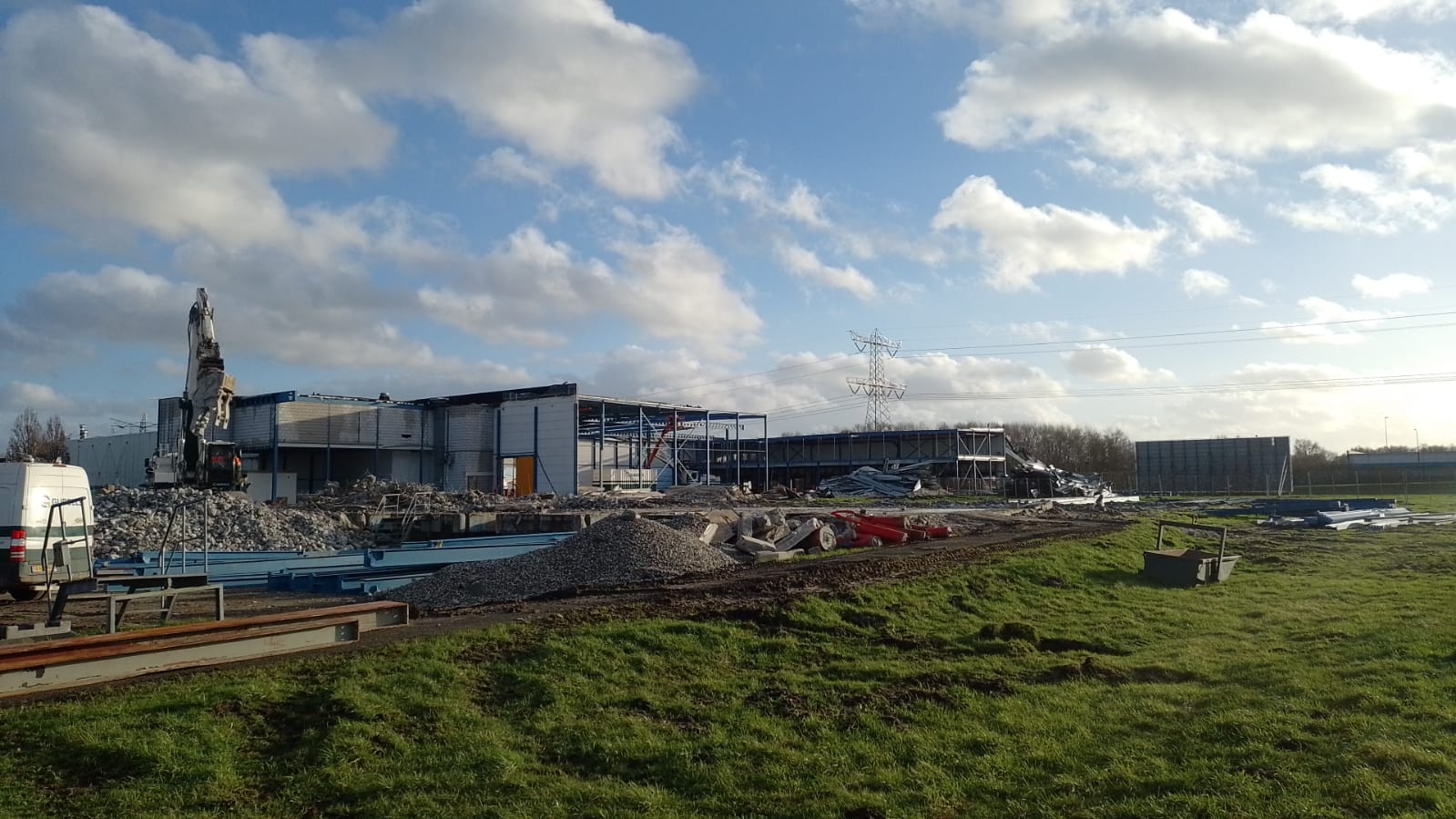
Circular demolition is how you do it!
WDP is building Prinsenhil Logistics Park between Prinsenhil and Eikdonk in Breda; it’s a brand-new multi-tenant warehouse with 27,000 m² of storage space divided into five compartments. But the old buildings on the site needed to be demolished first. Not just any demolition, of course: in line with WDP’s climate action plan, circular demolition is underway. What exactly is that and how does it work at the Breda site? We asked Angelo Van den Beemt of WDP and Martien Gubbels of circular demolition company Gubbels.
Circular demolition is demolishing, dismantling, disassembling, and remounting in such a way that you can reuse the raw materials that are released. Thus, circular demolition is an essential link in the circular economy.
Gubbels is fully engaged in this sustainable process at the Prinsenhil site in Breda. Martien Gubbels explains, “The first demolition phase is 90% complete; the new construction on it should be finished by the end of this year. Demolition of the second part will start in early 2024, with the new construction on it following later that year. The demolition work will take about eight to nine weeks each time. The old building totalled 23,000 m².”
Angelo Van den Beemt continues, “We first worked with Gubbels in 2018 on The Greenery in Breda, followed by The Greenery’s buildings in De Lier and Barendrecht. Now we are joining forces for Prinsenhil. So it is not our first experience with circular demolition, but it is the first on such a large scale. Circular demolition is still far from being standard practice, but it’s definitely a significant growth market.”
Will demolition contractors become important raw material suppliers for construction?
Gubbles answers to the affirmative. “Yes. Construction firms used to get their raw materials from nature; now they try to get as much from demolition as possible. This mind set is gradually creeping in, but, in practice, we still see that companies too often want everything new for a new-build project. Sometimes, of course, there is no other way. For example, the dimensions are different from before: a door used to have a standard height of 210 cm, now it is 230 cm. Furthermore, there are still many opportunities in circular demolition that we aren’t taking full advantage of right now. For example, architects should take material recovery into account more. Today, promises along these lines are often made, but there is still a world of difference between words and action. Indeed, good intentions often clash with practical objections, as circular demolition naturally requires a different way of working. We used to just destroy everything – done. Now we disassemble, unscrew everything, and put everything back together afterwards. This is a lot more intensive than the old-fashioned demolition process. An old-school demolition crew therefore sometimes needs to be retrained.”

Are old materials and parts simply reused on the site? Or will they be incorporated into new materials?
Gubbels responds, “Both. Primary recovery, where no treatment is required, is the ideal scenario, of course. If that fails, we opt for secondary reuse. For example, remelting steel and then casting it in a different shape.”
Van den Beemt continues, “Most materials just come back on the market. We actually leave this kind of decision up to the demolition crew. WDP itself is hardly concerned with this. Of course, we do like the fact that Gubbels can keep the price competitive precisely because they can recover and resell many old elements. The debris from the old concrete floor will be reused on the site itself, which will be used as a foundation under the new floor, as well as laying a construction road. If you can reuse materials immediately at the site itself – without transport, loading, or unloading – it’ll obviously be much more efficient. But then new construction has to start very soon after demolition, and that’s often where things can get complicated.”
Gubbels adds, “Did you know that we sell the old materials mainly to individuals? They just have lower standards than construction firms. So our beams, insulation, roof boards, clinkers, or steel beams often end up with people who are themselves busy with a remodel. We dismantle on site, measure everything, and take photos. Then we list everything for our regular buyers, but if they don’t want those materials, we just put them on Marktplaats.nl. And that’s where private buyers can then buy them.”
What else can you recover on the Prinsenhil site?
Gubbels explains, “Almost everything. Unfortunately, the refrigeration units are too old to be reused. They are processed as scrap metal. Then again, the cooling walls are recoverable; they have already been dropped off at a cold storage dealer. We reuse the cables and pipes ourselves. We dismantle the steel structures and then incorporate the long lengths into new structures. WDP will incorporate stony materials into green rubble walls along the walking and exercise paths for the benefit of biodiversity. And as Angelo said, the concrete floor will be reused on site at WDP’s request. In other cases, we process the concrete rubble into gravel: we sieve and wash the grit and deliver it to concrete plants, which in turn recycle them. This way, the gravel does not have to come from nature. Moreover, our company does infrastructure work in addition to demolition. Sometimes we stick around on a site to immediately take care of the sewerage and paving of the new project as well, which is, of course, very efficient. Asbestos and certain insulation materials are just about the only things we can’t recover at all.”
Want to know what else we are doing to combat climate change?
Check out WDP's Climate Action Plan!




